You’ve seen the Dire wolves used in the HBO TV Series, Game Of Thrones. Well, those dire wolves are Northern Inuits that have plenty of similarities with both Alaskan Malamute and Siberian Husky. If you are looking for a dog that looks just like a wolf, you are no exception to having a debate with yourself about the Alaskan Malamute vs Siberian Husky.
If you are a person living close to the arctics, or where the temperatures reach sub-zero, consider yourself lucky because you can own these dogs. These dogs are suitable for cold climatic conditions and can survive in temperatures up to minus 60 degrees Celsius.
Both these breeds look very similar in physical appearance, yet they are different. Let’s find out which one of these will fit perfectly in your family.
Origin and History
The Alaskan Malamute and Siberian Husky are perhaps the oldest working dogs of the northern region. It is thought that they originated around 12,000 years ago. Both breeds were later domesticated by Eskimos of the Arctic region around 4500 years ago. The Alaskan coastal tribe, known as Thule people, settled with these dogs 1000 years ago.
Both the dogs, along with another breed known as Alaskan Husky, share a very close genetic pool. All these dogs have their lineage from Siberia. Even though they look similar to Canadian Eskimo Dog and Greenland Dog, they are not genetically identical. The latter two breeds are Inuit dogs.
The American Kennel Club registered the Alaskan Malamute in the year 1935, whereas the Siberian Husky in 1930.
Physical Appearance
The striking feature of these two breeds is their wolf-like appearance. It is because both these breeds share similar lineage. But the Malamute is quite more massive than the Husky.
A male Alaskan Malamute measures 25 inches (63.5 cm) tall and weighs between 85 – 100 pounds (38.5 – 45 kg). Female Malamute stands 23 inches (58 cm) tall and weighs 75 – 80 pounds (34 – 35 kg).
The male Siberian Husky is 21–23.5 inches (53–60 cm) tall and weighs 45–60 pounds (20–27 kg). A female Husky is 20–22 inches (51–56 cm) and weighs 35–50 pounds (16–23 kg).
Both breeds have a double coat that protects them from a frigid environment. They can survive temperatures up to -60 degrees Celsius. The coat consists of think undercoat and long upper coat. Both dogs shed their undercoats twice per year.
Both breeds have a double coat that protects them from a frigid environment. They can survive temperatures up to -60 degrees Celsius. The coat consists of think undercoat and long upper coat. Both dogs shed their undercoats twice per year.
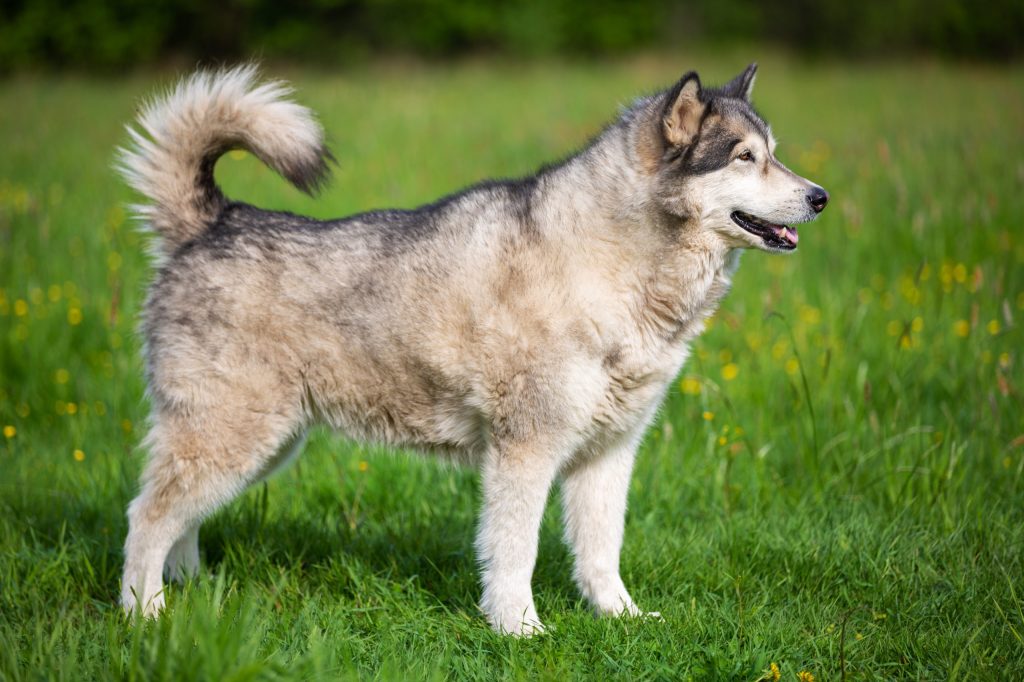
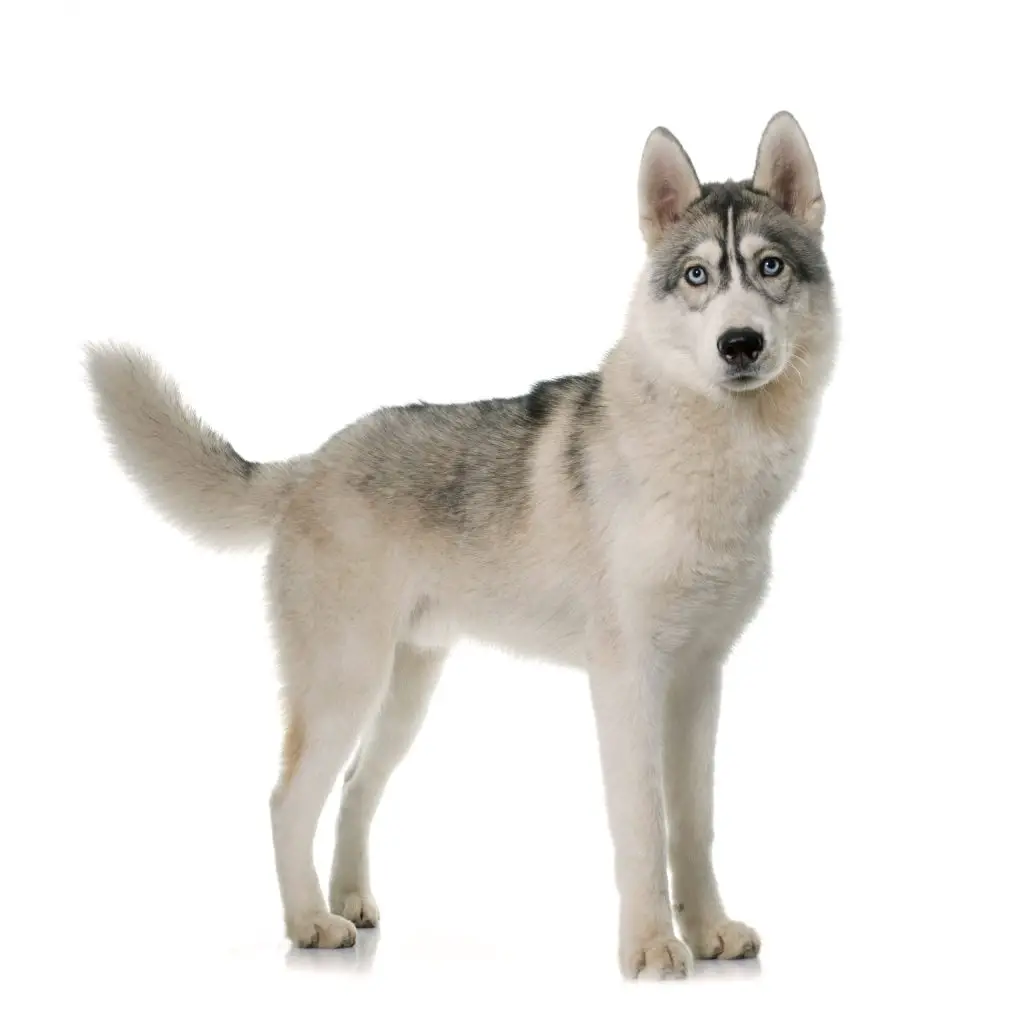
Alaskan Malamute’s coat has a wide range of colors; white and gray, black and white, red and white, or completely white. Apart from the color variations, they can hive markings on different places of their body.
The predominant coat color of a Siberian Husky is black and white. Other color variants such as copper-red and white, grey, and white are also seen. A rare coat variant agouti can also be observed in some dogs.
The color of the eyes is one of the significant differences between these two dogs. Siberian Huskies are known to have piercing eyes that can see through your soul. The most common eye colors are blue, brown, and black. Some Huskies have two different colored eyes, a condition known as heterochromia.
A purebred Alaskan Malamute has only one eye color variant; brown. Many prefer dark brown over the regular one.
As both dogs have similar lineage, they have some familiar characters such as pointy ears, broad head, and an acute sense of smell. Both the dogs have wide paws that help them distribute their boy weight and prevent them from sinking into the snow (act like snowshoes). The Alaskan Malamute has retractable claws like cats that help them muster through the snow.
Another significant difference between these two is their tails. Both have a heavily furred tail, but the Malamute’s tail is curled and carried over its back. A corkscrew tail is very common in Malamutes than Huskies.
Behavior and Temperament
As both these breeds have a similar origin, they almost have the same behavior and temperament. Both dogs have a high prey drive. They tend to chase smaller animals such as cats, squirrels, and even smaller dogs. Appropriate training and socialization will inhibit this behavior.
The Alaskan Malamute is a bit calm and is very fond of humans. This trait makes them excellent companion dogs. The Malamutes are often used as therapy dogs where they visit patients in hospitals. Their soft nature, calm attitude, and love towards their humans make them suitable for first-time dog owners.
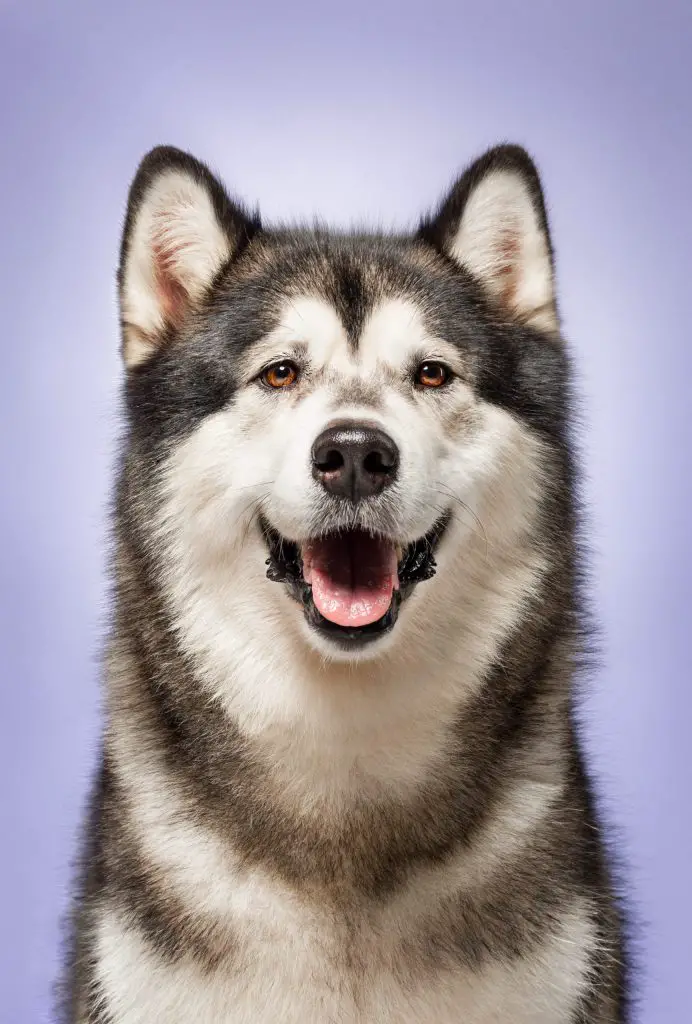
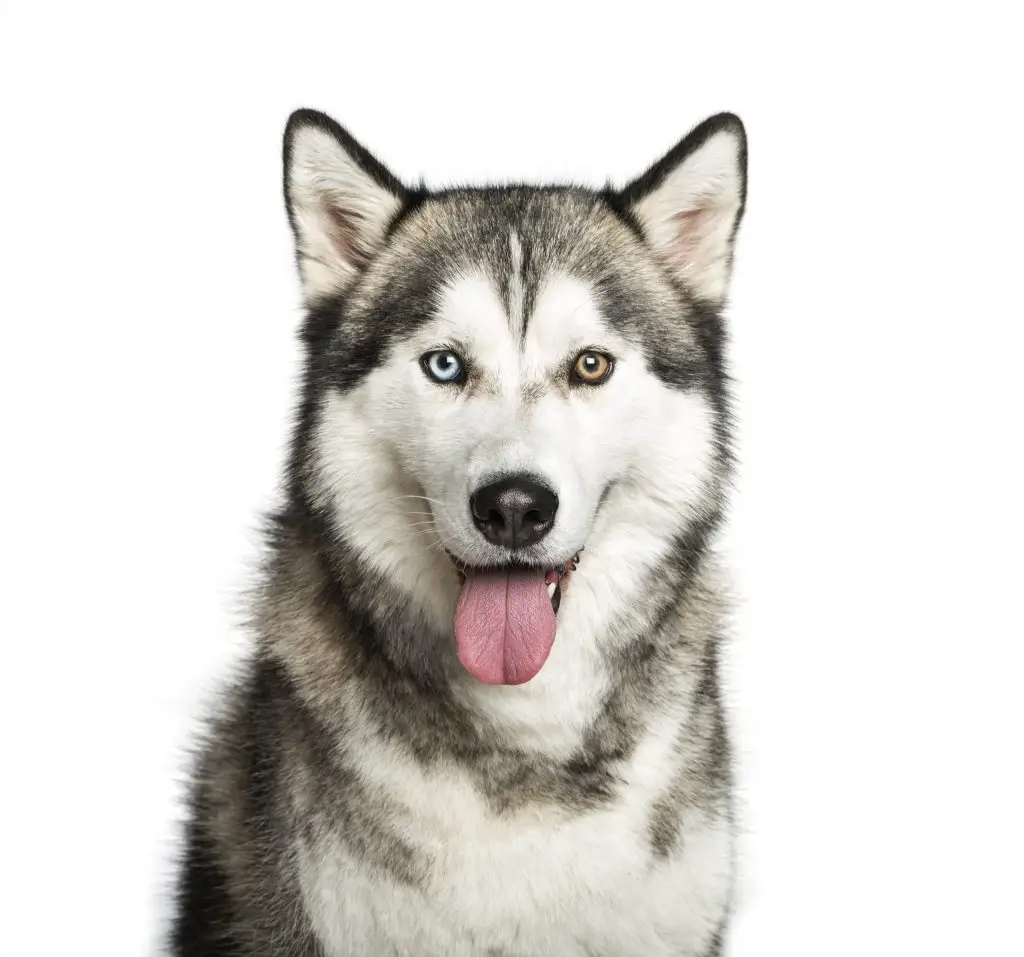
Siberian Huskies are full of energy. They like to be independent and have high pack tendencies. If you have other dogs in your house, the Huskies will tend to be part of that pack than humans. Their goofy attitude makes them one of the adorable pets on the planet.
The Huskies also have a high prey drive and chase small animals. Unlike Malamutes, an adequately trained Husky can be left unattended with children. It does not mean that Malamute isn’t suitable for children. Both these dogs are excellent baby sitters, but due to the size of the Malamute, it is advised not to leave them near children unattended.
Siberian Huskies are very chatty animals. You might be familiar with many Husky videos where these dogs argue with each other or their humans. They howl a lot, and it can be very problematic if unattended. The Alaskan Malamutes also tend to howl but is not intense as in Huskies.
As both dogs are fond of humans, they are not ideal guard dogs. They are intelligent, but that does not mean that they are easily trainable, especially the Husky. Their intelligence is what makes them disobey the commands. Siberian Husky is a very stubborn dog and is often difficult to train. They tend to be disobedient and independent.
But with proper dedication and patience, you can train them to be excellent family dogs. In 1925, a team of Siberian Huskies and their breeder sprinted through the harsh arctic blizzard for nearly 670 miles to deliver diphtheria antitoxin to a remote village, Nome. The heroic dogs Balto and Togo, who led the team, triumphed the race and were able to save many lives.
Being independent doesn’t mean that Huskies are impossible to train. You need prior experience with another stubborn dog of the same breed or any other such as Pomeranian.
The Alaskan Malamute is more suitable for a first-timer because of their calm demeanor.
Physical Activity and Exercise Needs
The Siberian Husky is a medium-sized dog, whereas the Malamute is a larger one. They are bred to pull the sleds. The Siberian Husky can run faster than the Malamute, but it cannot continue for more extended periods. The Alaskan Malamute will long last and can pull er weights of 1000 to 3000 pounds.
Both the dogs are working dogs, which means that they require intense physical activity.
None of these two dogs are suitable for apartments. They need ample amounts of space to run or play. Since Huskies are a bit more excitable dogs, they tend to chew furniture or anything they can when left alone. Provide lots of toys, and durable chew sticks to prevent boredom.
Both dogs are escape artists and tend to jump over the fence or dig beneath it.
Grooming and Shedding
Both dogs have thick double layer coat that sheds a lot twice a year; during spring and fall. Their dense undercoat will shed a lot, and you will find loads of hairballs around the house. Daily grooming is mandatory for both these breeds.
If you are a person who isn’t fond of spending time grooming your pets, both the breeds are not suggestible. People with allergies must stay away from these dogs.
Lifespan and Health
The average lifespan of a Husky is 14 years, whereas, for Malamute, it is 10.4 years. The most common cause of death in Huskies are genetic disorders such as laryngeal paralysis and seizures.
Malamutes are more prone to cancers (38%) and hip dysplasia. Only 2% of Huskies are reported to have hip dysplasia. Even though it is common in other medium size dogs, Huskies are not prone to hip dysplasia.
A recent case study indicates that rare genetic mutation resulted in hereditary polyneuropathy in Scandinavian Alaskan malamute dogs.
Other common health issues include:
- Eye problems
- Gastric diseases
- Skin diseases
- Lung and Kidney problems
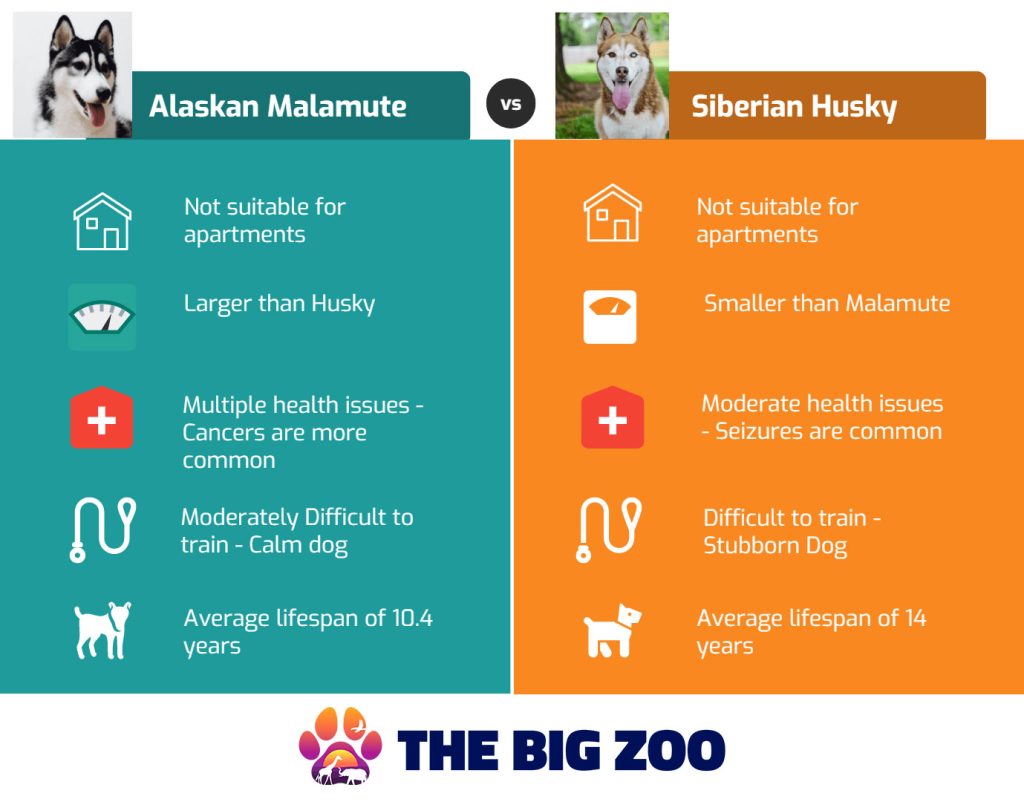
Which is the Best Wolf Dog For You?
The Battle of Alaskan Malamute vs Siberian Husky is an adamant one. First-timers and experienced owners can still be confused about selecting a suitable dog for them. We can’t blame them because both these dogs are so adorable, and it is a pride to have them.
The Siberian Huskies are more jumpy, mouthy, and can be quite independent. Malamutes are calm and incline towards their humans than other pets.
If you have other pets in your house, you can go for the Husky. The suitable dog for first-timers is the Malamute. So, have you selected one? Let us know which one it is. We would love to hear it.
References
Re-emergence of hereditary polyneuropathy in Scandinavian Alaskan malamute dogs—old enemy or new entity? A case series By Karin Hultin Jäderlund, Cecilia Rohdin, Mette Berendt, Øyvind Stigen, Merete Fredholm, Arild Espenes, Inge Bjerkås, and Lars Moe.
Hereditary Cataract Research in the Alaskan malamute By Dr. Sally Ricketts
Using multiple markers to elucidate the ancient, historical and modern relationships among North American Arctic dog breeds by S K Brown, C M Darwent, E J Wictum, and B N Sacks.
The Physiological Response of Siberian Husky Dogs to Exercise: Effect of Interval Training By A. E. Ready and G. Morgan

Lydia King is a huge animal lover and has always been fascinated with learning about the animal kingdom. She enjoys writing about anything animal related from scientific information about rare species to animal references in pop culture.











